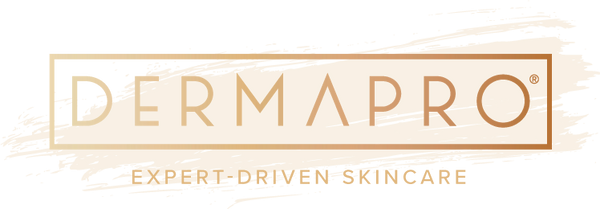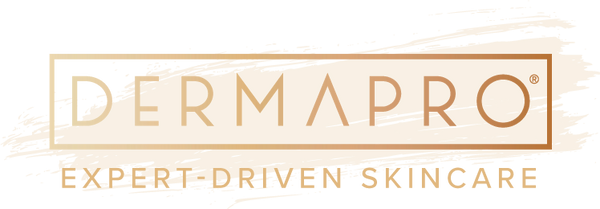Laser Focus: Types of Cosmetic Lasers
Laser Focus: Types of Cosmetic Lasers

Skincare enthusiasts - read on! Age, acne, sun exposure, and other environmental factors can adversely change the look and feel of your skin. Thankfully, many people are reversing their skin damage using the latest cosmetic lasers, commonly know as laser resurfacing. What exactly is a laser? L-A-S-E-R, short for Light Amplification by Stimulated Emission of Radiation, are devices that produce wavelengths of energy to target and treat specific skin concerns. With all of the different lasers on the market today, let’s break down the different types and which kind works best for each skin concern.
What Are The Types of Cosmetic Lasers?
There are two types of lasers when it comes to skin resurfacing - ablative and non-ablative. Ablative lasers produce a wounding effect, meaning they remove the thin outer layer of the epidermis while heating the skin, or dermis, underneath. This type of laser is most effective for stimulating collagen fibers which improve fine lines and wrinkles, repairing the skin from scarring, and immediately reducing hyperpigmentation and sun damage. The downside to the ablative laser is it yields significant downtime and has an increased risk of infection and complications due to the significant injury to the epidermis.
The second type of laser is the non-ablative laser, which is non-wounding or non damaging to the epidermis, but penetrates the dermis to stimulate collagen fibers and help with hyperpigentation and broken capillaries. This type of laser has considerably less downtown but usually requires more sessions to achieve the desired effect. Non-ablative lasers are widely used for hyperpigmentation, broken capillaries, tattoo removal, laser hair removal, fine lines and wrinkles as well as a preventative to aging.
Why Do They All Treat Different Things?

Lasers work by directing heat to specific depths of the skin, which correlate to a specific concern using varied wavelengths. For example, the non-ablative Fraxel Dual Laser, which offers two depths of wavelengths in one machine. The 1927nm wavelength targets hyperpigmentation and discoloration which is generally found closer to the surface of the skin whereas the 1550nm wavelength penetrates deeper into the skin targeting wrinkles, acne scars and texture. Comparatively, the ablative CO2 laser taps in around 10,600nm, essentially destroying the tissue within that beam, therefore causing the skin to signal a repair of the “injury.” This leads to significant increased collagen, improved texture, and almost a complete reduction in discoloration. Furthermore, both ablative and non-ablative lasers are available in fractional or non-fractional. Fractional lasers allow for multiple beams to penetrate the skin with each pulse leaving some of the surrounding tissue in tact. In comparison, non-fractional lasers emit a singular beam to target and “destroy” the entire area of skin with each pulse. Typically, because non-fractional lasers cause significantly longer down time and higher risk for complications, most professionals use and recommend fractional lasers, particularly for ablative procedures.
Here’s a breakdown of popular lasers and brands on the market today.
Ablative Lasers (CO2, Erbium: YAG)
- CO2 - Used to treat wrinkles, scars, warts, precancerous growths, hyperpigmentation
- Erbium - Used to treat deep lines and moderate wrinkling of the hands, neck and chest. Less heat and fewer side effects than CO2 Lasers. Better for darker skin tones.
| Average Cost | $2700/session + |
|---|---|
| Downtime | 7-10 Days |
| Number of Treatments | Generally 1 |
| Best For | Significantly aged skin, severe acne scarring, severe sun damage, age spots, crows feet, sagging skin, deep wrinkling |
Fractional Laser (most popular) : Pixel CO2, SmartSkin®, DEKADOT™, Ellumine, NaturaLase CO2, MIXEL, Fraxis, Ultrapulse® ENcore, AcuPulse™ MultiMode, Fraxel™ re:pair, CO2RE™, Pixel® 2940, Icon™ 2940 Fractional, Sciton ProFractional™ (XC), Cutera Pearl™ Fractional
Non-Fractional Laser: UltraPulse®, AcuPulse™, Matrix LS-40, NaturaLase, Contour TRL™, SmoothPeel™
Non-Ablative Lasers (Alexandrite, Diode,Nd: Yag, Erbium, IPL*)
- Alexandrite - best for broken capillaries, hair removal, tattoo removal
- Diode - best for broken capillaries, acne scarring
- Erbium - best for large pores, hyperpigmentation
- Nd:YAG - best for brown spots, hair removal, tattoo removal
- IPL - best for brown spots, blood vessels
| Average Cost | $300/session + |
|---|---|
| Downtime | None; minor peeling |
| Number of Treatments | Varies; Usually 3-6 |
| Best For | Minimal hyperpigmentation, rosacea, spider veins, hair removal, age prevention, less severe acne -related skin concerns |
Fractional Laser (most popular) : Fraxel™ re::fine, Picosure® FOXUS, Affirm, Starlux, Icon, Fraxel™, Re::store DUAL, Clear & Brilliant®, Pulsed Dye Laser
Non-Fractional: Thermascan, CoolTouch®, CT3Plus, Harmony XL, SmoothBeam®, Laser Genesis
*Intense Pulse Light (IPL) - Technically not a laser, IPL offers similar results for treating sun damage, acne scars, broken capillaries, and hyperpigmentation.
Who’s A Good Candidate For Laser Resurfacing?
Depending on what you’re trying to achieve, there is a laser for just about everyone. In general, clients who are prone to keloid scarring, have poor wound healing, those who are pregnant, or those who are regularly out in the sun are not the best candidates for lasers. Interested in a specific laser?
Check out our Laser Focus Series by DermaPro for articles relating to all things cosmetic lasers.






